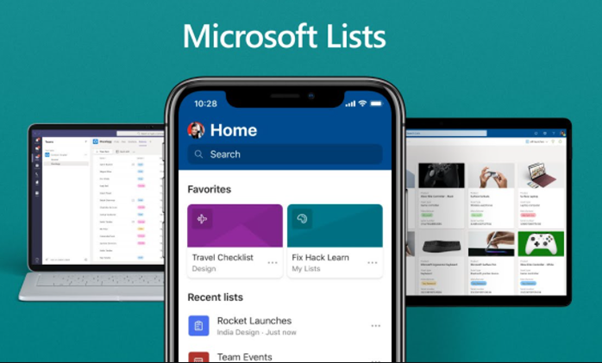As mentioned in the previous blog in the series, Microsoft 365 has revolutionised the way we work, both in office and when working remotely, since its conception as Microsoft Office in 1990. Most of us have been part of its rise to the top by using its range of tools and features every day.
A tool that Microsoft have introduced is ‘Lists’.
Lists gives you a platform to create lists and organise information from – it allows you to also share lists and work together on said lists – through collaboration with others. It sounds similar to a spreadsheet list, but Lists has many features that make it very unique.
Unique features of Lists
Lists has multiple different uses, and can be used as an inventory, issue, or asset tracker.
Lists allows you to define parameters of your list and decide which parts are visible to others. It also allows you to view your data in a variety of different ways, including a standard excel format, a card format, and a calendar format. Lists gives you a lot of control over the presentation of your information.
You can use Lists to track team and solo tasks, but Microsoft Planner and To-do specialise in this and have views specifically catered for these uses whilst Lists does not. As we previously mentioned Lists’ uses are much broader.
Lists within Teams has been described essentially as an evolution of the popular application SharePoint Lists. As part of the evolution, as well as seeing similarities between the two, we will see new features – features that have the ability to change work practices massively.
Another feature to this evolution is the introduction of the Microsoft List app that will aggregate all the lists you already have on your computer. This will act as the one and only place you need to access to see existing lists or to create new ones, thereby eradicating the time-consuming task of remembering which SharePoint site has the list you are trying to find, making things much easier for you – the user. You can author, create and edit new lists – all with prebuilt templates that are varied for event/asset management and all within the app whilst on the go.

Lists is even available within Microsoft Teams! Lists allows you to create new lists and edit them all without leaving Teams.
Lists also connects to Power Automate (see other blogs in the series). Power Automate adds necessary data to lists and can then post over to Teams to let your colleagues know about the new data – automatically!
Your technology partner
At Elixis, we can guarantee that you will get the most from your IT. With our team of professionals, we ensure top quality service with a friendly approach to you and your team. We approach IT proactively, seeking out any issues before they arise and assure measures are put in place so that the problem does not rear its ugly head again. Contact us to find out how we can help you.
For more information, feel free to send us a message.


